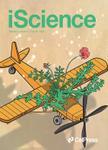版权所有:内蒙古大学图书馆 技术提供:维普资讯• 智图
内蒙古自治区呼和浩特市赛罕区大学西街235号 邮编: 010021

作者机构:Key Laboratory for Special Functional Materials of Ministry of Education National & Local Joint Engineering Research Center for High-efficiency Display and Lighting Technology School of Materials Science and Engineering Collaborative Innovation Center of Nano Functional Materials and Applications Henan University Kaifeng 475004 China. Key Laboratory for Special Functional Materials of Ministry of Education National & Local Joint Engineering Research Center for High-efficiency Display and Lighting Technology School of Materials Science and Engineering Collaborative Innovation Center of Nano Functional Materials and Applications Henan University Kaifeng 475004 China. Electronic address: baifengsun@***. Department of Chemical and Biological Engineering The University of New Mexico Albuquerque NM 87131 USA Advanced Materials Laboratory Sandia National Laboratories Albuquerque NM 87106 USA Center for Integrated Nanotechnologies Sandia National Laboratories Albuquerque NM 87185 USA. Electronic address: hfan@sandia.gov.
出 版 物:《iScience》
年 卷 期:2019年第11卷第JANUARY 25, 2019期
页 面:272-293页
主 题:Materials Science Nanoparticles Supramolecular Chemistry
摘 要:Nanoparticles (NPs) of controlled size, shape, and composition are important building blocks for the next generation of devices. There are numerous recent examples of organizing uniformly sized NPs into ordered arrays or superstructures in processes such as solvent evaporation, heterogeneous solution assembly, Langmuir-Blodgett receptor-ligand interactions, and layer-by-layer assembly. This review summarizes recent progress in the development of surfactant-assisted cooperative self-assembly method using amphiphilic surfactants and NPs to synthesize new classes of highly ordered active nanostructures. Driven by cooperative interparticle interactions, surfactant-assisted NP nucleation and growth results in optically and electrically active nanomaterials with hierarchical structure and function. How the approach works with nanoscale materials of different dimensions into active nanostructures is discussed in details. Some applications of these self-assembled nanostructures in the areas of nanoelectronics, photocatalysis, and biomedicine are highlighted. Finally, we conclude with the current research progress and perspectives on the challenges and some future directions.